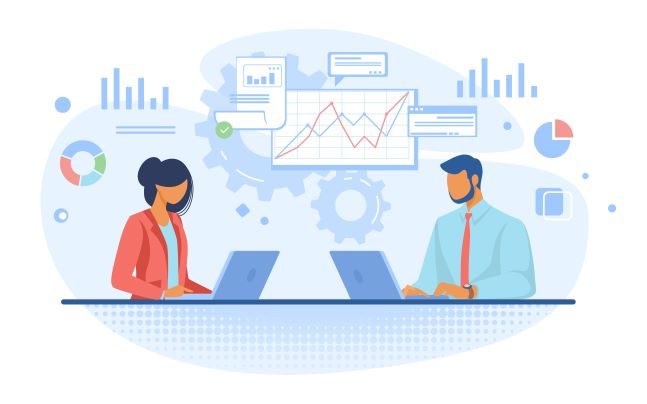The focus of corporate houses has been increasingly shifting to cybersecurity for the past few years. Organizations across the world agree that cyberattacks are no longer merely their concern alone, but a societal risk now. This trend has spurred the growth of cybersecurity jobs and enhanced investment in cybersecurity by global companies promises a strong future.
A recent report by Gartner predicts that by 2026, among large organizations, 30 percent will have public Environmental, Social, and Governance (ESG) goals related to cybersecurity, up from less than 2 percent in 2021.
It clearly shows that organizations shall have to be more transparent when it comes to cybersecurity and the risks involved. It impels enterprises to install secure systems to protect sensitive data from falling prey to unauthorized access.
In such a scenario, the role of a cybersecurity expert becomes prominent. You can gain expertise in securing the systems, handling cybersecurity threats, and preventing cyberattacks by studying in a professional online cybersecurity course that teaches you different aspects of this vertical.
In this blog, we have listed five important types of cybersecurity and threats related to them, which a cybersecurity expert deals with. The types of cybersecurity include:
- Network security
- Infrastructure security
- Information security
- End-user behaviour
- Internet of Things (IoT) security
Let’s elaborate on each type now.
Network Security

The practice of protecting your data from unauthorized access via your computer networks is known as network security. It protects you from a number of dangers by combining software and hardware technologies.
Network security serves as a barrier between your network and criminal activity, and as an organization, you want to ensure network safety to be able to deliver impeccable services to your employees and consumers. In general, you safeguard your company’s reputation by securing the networks. A network administrator can help resolve issues at this stage too.
Network security can be further categorized into:
- Emails: Emails are one of the most common entry points for hackers. To avoid loss of critical data, email security guards against any incoming threats.
- Firewall: This could be in the form of software, hardware, or a combination of the two. A firewall separates your secured internal network from the rest of the Internet.
- Application security: Hackers can gain access to and penetrate your business’s network through the weaknesses in business applications. A patch can fix these flaws, and applications are secured to prevent breaches.
- Anti-virus and anti-malware software: Anti-malware software scans malware as soon as it enters the system, monitors files for abnormalities, and removes it to repair any harm. Anti-virus software protects your system from any virus attacks.
- Prevention of data loss: You want to make sure your employees don’t send sensitive data to external parties not falling under your network’s purview. Data loss prevention stops users from forwarding, downloading, or transmitting sensitive data in a dangerous way.
You can enhance network security through solid passwords, extra layers of logins, anti-virus programs, firewalls, incognito mode, encryption, and monitored Internet access.
Infrastructure Security
Organizations deploy critical infrastructure security measures to protect integral infrastructure resources such as network communications, servers, data center, and systems for seamless connectivity. This technique is aimed at mitigating risks and cyberattacks related to these systems that can fall prey to corruption, sabotage, or terrorism.
Cybercriminals can target utility systems that society is heavily dependent on, which include water supply, electricity grid, heating, air conditioning, or cooling system. Though these systems are not infringed by cybercriminals directly, they can serve as a channel to launch cyberattacks or malware into the internal systems.
You must know the vulnerabilities to protect your infrastructure from such cybercrimes. Create foolproof ways to keep cyberattacks at bay.
Information Security

Also called InfoSec, it is a technique through which the cybersecurity experts design and implement security tools to ensure the safety of your sensitive business information from getting wrecked, distorted, or altered. It forms an integral part of cybersecurity that specifically focuses on data security.
It helps ensure the confidentiality, integrity, and availability (CIA) of business data in systems and apps by guaranteeing exclusive access to authorized users.
Information security can be of the following types:
- Cryptography: This is a method to stow away content to protect data, and only the user with the right encryption key may access the encrypted data. Cybersecurity experts keep data in transit and storage anonymous and secure through cryptography.
- Cloud security: This platform focuses on the weak points originating from the Internet services and common environments that are shared with everyone. Cloud security measures help protect apps and infrastructure from cybercrimes in various cloud-connected elements.
- Response to incidents: Cybersecurity experts have to adopt various practices to monitor and analyze the chances of malicious activities. You must develop and keep a plan ready to respond to any incident that might harm your network. It can help you get evidence for any future legal action and prevent unexpected system breaches.
- Vulnerability Management: You scan the vulnerable system areas which could be related to hardware or software. In fast-paced businesses that are regularly making new additions to their apps or updating their infrastructure, vulnerability management helps to keep a check on possible threats due to exposures.
End-User Behaviour
A user can help prevent cyberattacks as much as a cybersecurity expert. Since the users are at the front-end, releasing information out there on the network, they can easily fall prey to cybercrime. Users, if aware of the cybersecurity threats, can manage them at their end, and prevent serious damage to systems.
The best way to empower users is to educate them about cybersecurity threats and how they can tackle these challenges at their level. As a cybersecurity expert, you can prepare a plan to generate user awareness and engage users in a way that they are able to understand the risk involved in the digital world when they share sensitive information online. You can talk about various cyber threats, device security issues, phishing scams, password creation, physical security, and other related things.
Internet of Things (IoT) Security

The Internet of Things (IoT) has evolved as the next technology revolution tool for businesses to grow digitally. IoT offers various choices to users for managing things virtually in a smart way. It includes equipment such as appliances, printers, lights, sensors, and wifi-routers, among other routers, through its security network.
The most significant challenge that companies usually face in deploying IoT solutions is the risk of security. IoT-related platforms can be risk-prone as they hold sensitive information and companies need to put in place tighter cybersecurity measures to secure these networks.
Conclusion
It is clear that organizations must follow a strategic approach in securing their network and systems by adopting cybersecurity best practices and having cybersecurity experts to deal with threats/cyberattacks.
Cybersecurity specialists can detect any cyber threats and risks beforehand and safeguard the systems through compatible means to enhance security.
You can gain industry-ready skills by studying what it takes to be a cybersecurity expert through ABM College’s Cybersecurity Diploma program. It helps you gain knowledge and practice your classroom learning through a practicum. You are all set to join the industry in just 70 weeks.
Thinking of becoming a cybersecurity professional?
Contact us now!
Visit our blog to learn more about employment trends.
Picture credits:
Hero image: John Oriade, Graphic Designer, ABM College
Other vectors:
Analyze vector created by pch.vector – www.freepik.com
Discussion vector created by pch.vector – www.freepik.com
Online workshop vector created by vectorjuice – www.freepik.com
About The Author

Private Career College
ABM College is a leader in career-focused education, committed to empowering students with industry-relevant skills. With expert instructors and practical training, ABM College delivers high-quality programs in health, business, technology, and more, ensuring graduates are prepared to meet workforce demands. Known for its supportive learning environment and a focus on real-world application, ABM College is a trusted educational partner helping students achieve professional success across Canada.
